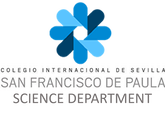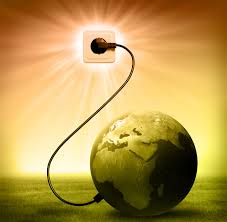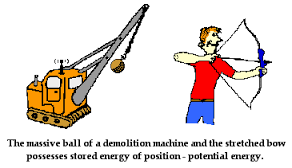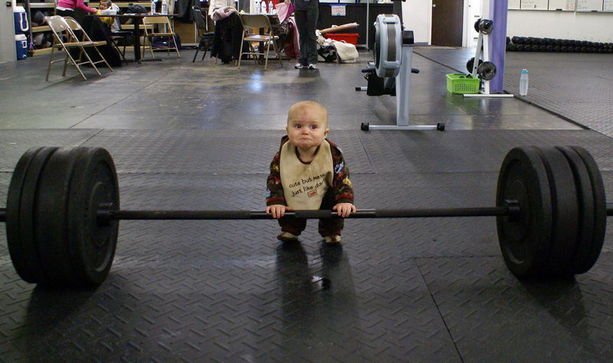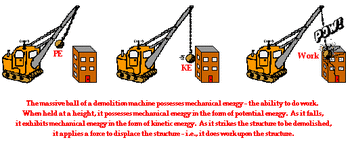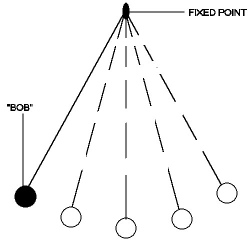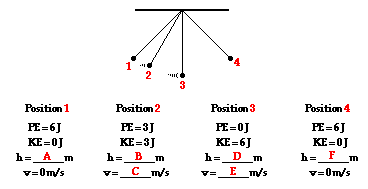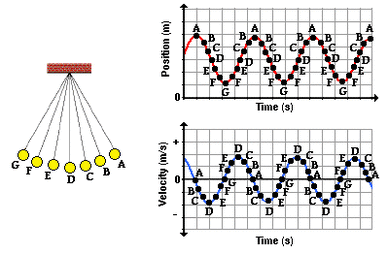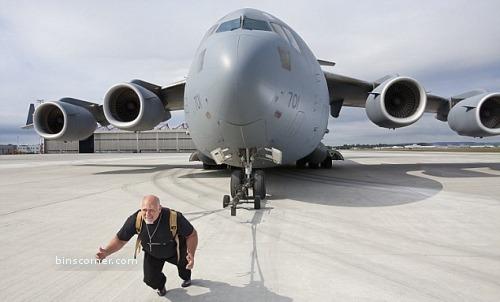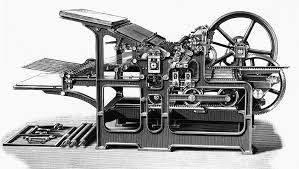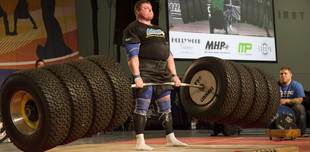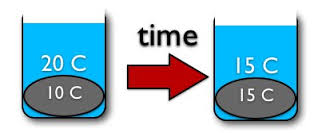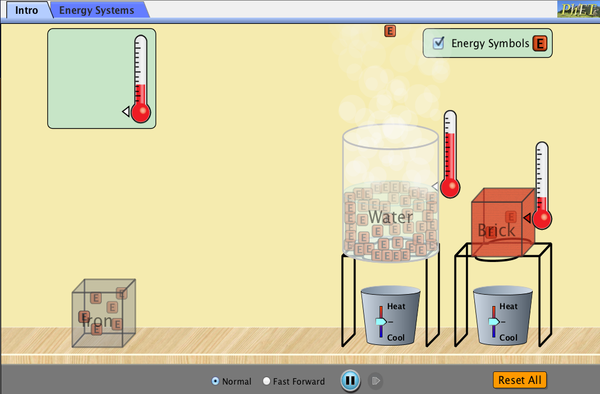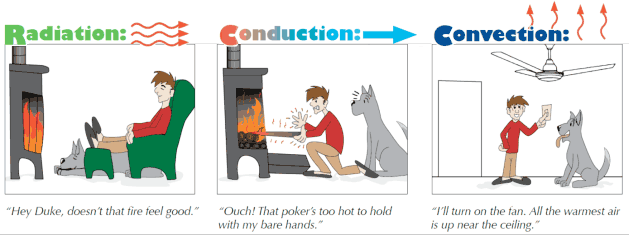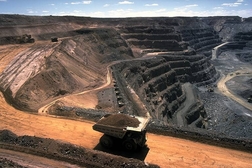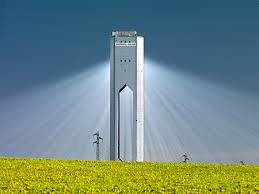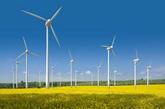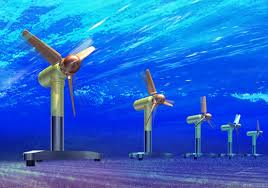Unit 9 - Energy
|
|
9a - What is energy?Energy is the potential to do work.
When a force acts upon an object to cause a displacement of the object, it is said that work was done upon the object. "There are three key ingredients to work - force, displacement, and cause. In order for a force to qualify as having done work on an object, there must be a displacement and the force must cause the displacement." ("Definition and Mathematics of Work", 2016) |
|
Units: The units used for energy are Joules (J).
Task 9a: Define "energy".
9b - Potential and kinetic energy
|
All forms of energy such as chemical, electrical, thermal and nuclear can be considered as potential (position) energy, kinetic (movement) energy or a combination of both.
Potential energy is when an object posses energy associated to its position (right). To calculate it we use the formula: We will most commonly see gravitational potential energy which can be calculated using: PEgrav = m x g x h
|
Kinetic energy is associated with movement such as the energy of a moving car. To calculate it we use the formula:
Task 9b:
1. What is the increase in PEgrav if a 75 kg man climbs up three stories in a block of flats. Each flat has the height of 3 m.
2. A pulley lifts up a box of 100000 g to a height of 150 dm. Calculate the energy aquired by the box.
3. Calculate the kinetic energy posessed by a car of 500 kg moving with a velocity of 108 km/h.
4. By how much does the KE of a 400 kg car change when it reduces its speed from 90 km/h to 54 km/h.
1. What is the increase in PEgrav if a 75 kg man climbs up three stories in a block of flats. Each flat has the height of 3 m.
2. A pulley lifts up a box of 100000 g to a height of 150 dm. Calculate the energy aquired by the box.
3. Calculate the kinetic energy posessed by a car of 500 kg moving with a velocity of 108 km/h.
4. By how much does the KE of a 400 kg car change when it reduces its speed from 90 km/h to 54 km/h.
ANS 1. 6600 J 2. 15000 J 3. 225000 J 4. -80000 J
9c - Mechanical energy
|
When an object has work done upon it, it gains mechanical energy. For example, when a weightlifter uses chemical potential energy stored in their body to lift a weight (do work on it). As the weight is lifted higher it gains gravitational potential energy. This energy can then also be used to do work so is described as mechanical energy.
|
So, ME, can be described as the total kinetic and potential energy gained when work is done to provide it.
ME = KE + PE
Task 9c: Calculate the mechanical energy of 0.5 kg book falling at a velocity of 6 m/s at a height of 4 m. ANS: 28.6 J
Extension: A ball of mass, m, falls from a height of 15 metres. Use the principle of the conservation of mechanical energy ( KE1 + PE1 = KE2 + PE2 ) to calculate the velocity of the object at a height of 5 metres. ANS: 14 m/s = 50 km/h
9d - Conservation of energy - Pendulums
|
If no work is done by, or done on an object, the mechanical energy it has must stay the same. So:
KE1 + PE1 = KE2 + PE2 This can be seen in the action of a pendulum. A pendulum (right) consists of a bob (a weight) attached to a fixed point by some kind of cord. If we ignore the small effect of air resistance then no energy would be lost to friction with the air. This means that the ME must remain constant. |
We can display the movement of a pendulum by plotting a velocity-time graph or a position-time graph as seen below.
In this diagram, position D is the middle position in the swing.
Task 9d:
1. Sketch a position-time graph where position F is considered 0 m.
2. Explain why, in reality, a pendulum will eventually stop swinging.
3. Watch this VIDEO and explain why the different pendulums quickly lose the same timing even though they are raised to the same height. (Discuss PE and KE)
1. Sketch a position-time graph where position F is considered 0 m.
2. Explain why, in reality, a pendulum will eventually stop swinging.
3. Watch this VIDEO and explain why the different pendulums quickly lose the same timing even though they are raised to the same height. (Discuss PE and KE)
Extension: Pendulums we used to provide the first simple proof of the Earth´s rotation. Watch this VIDEO and see if you are able to explain how they are used.

By Nbrouard - Own work, CC BY-SA 3.0, https://commons.wikimedia.org/w/index.php?curid=1753900
9e - Work (NOT IN FINAL EXAM)
|
Humans commonly use machines to carry out work but machines are never able to convert all of the energy provided into useful work due to energy dissipated to the environment. E.g. heat energy transferred because of friction.
When carrying out work with a machine, we want to be as efficient as possible. We can calculate the efficiency, r, using this simple equation:
|
r = useful work / energy provided
Task 9e:
1. Calculate the work done by a 60kg woman climbing a 6 m ladder.
2. A crane´s motor uses 20000 J of energy to lift a box of 100 kg to a height of 12 m. Calculate its efficiency.
1. Calculate the work done by a 60kg woman climbing a 6 m ladder.
2. A crane´s motor uses 20000 J of energy to lift a box of 100 kg to a height of 12 m. Calculate its efficiency.
ANS: 1. 3500 J
9f - Power (NOT IN FINAL EXAM)
Task 9f:
- Calculate the power of the man who pushes the box 8 m with a force of 15 N in a 6 s.
- Diego elevates his 80-kg body up a 2 m ladder in 1.8 seconds. Calculate his power (assuming the force needed to move up is that of his weight).
ANS: 1. 20 W 2. 871 W
9g - Heat and temperature (NOT IN FINAL EXAM)
Temperature is a way of measuring the average thermal energy (a type of kinetic energy) of the particles in a body. In science we tend to use the absolute temperature scale known as the Kelvin scale where 0 K represents 0 KE (no particle movement).
Heat is, therefore, the transfer of thermal energy. There are 3 types:
|
Radiation:
The transfer of thermal energy through electromagnetic waves without need molecules to pass through. |
Conduction:
The transfer of thermal energy via the increased movement of particles and their collisions with other particles. |
Convection:
Hot fluids are less dense than cold fluids therefore they rise away from the heat source. This allows the cold fluids to move to the heated area. |
9h - The rational use of energy (NOT IN FINAL EXAM)
|
|
|
Problems with current energy production
Most energy production is related to the burning of fossil fuels such as coal, oil and natural gas.
Solutions
Asides from reducing our dependence on energy, the major solution is finding cleaner and renewable forms of energy such as solar, wind and tidal. Below some of the benefits and limitations.
|
Benefits:
|
Limitations:
|
References
("Definition and Mathematics of Work", 2016)
